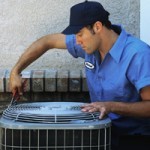Low flush toilets have been available since 1994 and are highly recommended both by the government and multiple green organizations to help reduce the water use in your home. But, the big question you probably have is whether these highly popular alternatives to regular toilets in fact work.
The Numbers
To start with, low flush toilets use less than half as much water to flush as a normal toilet. The average standard toilet uses 3.5 gallons per flush, while a low flush toilet uses only 1.6 gallons per flush. Some new toilets even use less – with the new High Efficiency Toilet (HET) standards setting the maximum flush capacity at 1.3 gpf.
While those toilets did not always perform to optimal standards when they were first released 17 years ago, they have come a long way and now operate almost identically to standard toilets. In fact, most public and restaurant restrooms built in the last 15 years now use these types of toilets instead to save money.
Choosing a Model that Will Work
There are a number of ways to measure different toilets. Just like almost any fixture, the manufacturer, design, and construction of a low flush toilet will determine how well it works. So, while for the most part low flush toilets work like normal toilets, you should take some things into consideration.
To start with, you must choose between either a siphonic or wash-down style toilet. The siphonic toilet uses much more water in the bowl, but as a result has a lot higher chance of clogging. The wash down method uses far less water in the bowl and does not clog as much, but the result is a somewhat tougher to clean interior of the toilet.
Pricing
The lowest prices may not represent the best low flush toilets on the market, but neither do the highest prices. Look for mid-range prices from competitive manufacturers. For less than $300, you can often buy a solid low flush toilet that will not clog any more often than a standard toilet and will save a tremendous amount of water and energy each year by reducing the amount of water flushed.
Low flush toilets are effective, inexpensive and largely popular for a good reason – they work. So, if you are remodelling a bathroom or simply want to make a change to the toilet you currently have, consider installing a low flush toilet to take advantage of green energy technology that is freely available for your bathroom.


